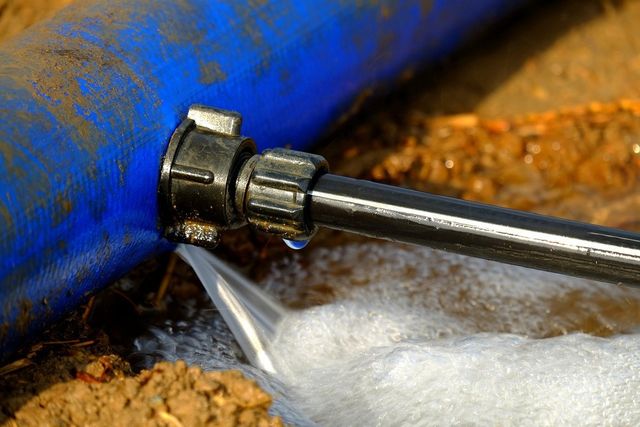Uncover Smart Ways to Detect Concealed Leaking Water Lines
Uncover Smart Ways to Detect Concealed Leaking Water Lines
Blog Article
This great article listed below pertaining to Hacks to detect leaks is exceptionally fascinating. Don't miss out on it.

Early detection of leaking water lines can minimize a potential catastrophe. Apart from saving you cash, it will certainly decrease the aggravation and irritation. The minute you find a leak, calling your plumber for repairs is the best service. Nonetheless, some little water leaks may not be visible. If you can not find it with your naked eyes, right here are some hacks that aid.
1. Examine the Water Meter
Examining it is a guaranteed means that helps you find leakages. If it moves, that suggests a fast-moving leakage. This suggests you may have a slow leak that might also be below ground.
2. Check Water Consumption
Evaluate your water expenses as well as track your water usage. As the one paying it, you must observe if there are any type of disparities. If you spot sudden changes, despite your intake coinciding, it means that you have leakages in your plumbing system. Bear in mind, your water costs must drop under the exact same range monthly. An unexpected spike in your bill indicates a fast-moving leakage.
A consistent boost every month, also with the same practices, reveals you have a slow-moving leak that's also slowly intensifying. Call a plumber to extensively examine your residential property, specifically if you really feel a cozy location on your flooring with piping beneath.
3. Do a Food Coloring Examination
When it comes to water intake, 30% comes from commodes. If the color in some way infiltrates your dish during that time without flushing, there's a leak between the storage tank as well as bowl.
4. Asses Outside Lines
Don't fail to remember to check your outdoor water lines as well. Needs to water permeate out of the connection, you have a loosened rubber gasket. One tiny leak can waste loads of water and also surge your water costs.
5. Check and Examine the Situation
Property owners need to make it a habit to inspect under the sink counters and also also inside closets for any bad odor or mold growth. These 2 warnings show a leak so prompt focus is required. Doing routine assessments, also bi-annually, can save you from a major issue.
If you understand your home is currently old, maintain a watchful eye on your heaters, pipes, pipelines and so on. Look for stainings as well as damaging as the majority of pipes and devices have a life span. They will additionally normally wear away as a result of deterioration. If you suspect dripping water lines in your plumbing system, don't wait on it to rise. Call an expert plumber immediately so you do not wind up with a terrible mess in your home.
Early discovery of dripping water lines can reduce a possible catastrophe. Some tiny water leakages might not be noticeable. Inspecting it is a proven way that assists you find leakages. One tiny leakage can waste tons of water as well as spike your water expense.
If you think leaking water lines in your plumbing system, do not wait for it to intensify.
How to Know If Your Home Has a Hidden Leak
Water Meter Reveals Inexplicable Water Usage
If you’d like to test whether or not there’s a leak somewhere in your home, you can do this using your water meter. Here is how to conduct the test:
Don’t use any water in your home for at least 30 minutes; this also means not turning on faucets or water-using appliances.
Go outside, and check your water meter for activity.
If your water meter shows that there was activity, even though no one was using any water, this proves that there is a leak in your home.Visible Mold or Mildew Growth
Leaks behind walls create moist, dark environments that allow mold and mildew to grow and thrive. Eventually, you might see mold growth forming on the wall closest to a hidden leak.
If mold is growing in an area that receives a high amount of moisture, such as a bathroom, it may simply be an indication that better ventilation is needed. However, if you see mold growth on a wall or the ceiling in an area where you would not expect, you probably have a hidden leak.
Musty, Mildew Odor
Sometimes you might not be able to see the mold or mildew that is growing as a result of a leak. However, the smell can give the problem away just as easily. If you catch a whiff of something musty, there’s a good chance that old water is collecting somewhere in your home that you can’t see.
Stained/Warped Walls, Ceilings, or Floors
When your home soaks up water, a variety of red flags can become visible, including ceiling stains, bubbling drywall, warped walls, and sagging floors. While these issues can be caused by excess humidity, they can also be signs that a pipe or plumbing connection has started leaking behind your walls.
Inexplicably High Water Bill
After a while, you get a general sense for what your water bill should be. If you own a pool or sprinkler system, your bill will tend to be higher during summer. However, if you receive a water bill that seems especially high, and you can’t figure out what caused it, then you may have a hidden leak somewhere that’s increasing your bill.
https://www.plumbingjoint.com/blog/2019/july/how-to-know-if-your-home-has-a-hidden-leak/

I hope you liked our piece on Finding hidden leaks. Many thanks for taking time to read through our article. Those who liked our blog posting kindly do not forget to pass it around. Thanks so much for your time spent reading it.
Book Service Report this page